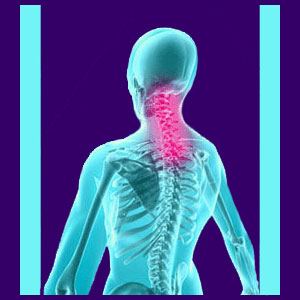
Chronic neck ache is a problematic occurrence which can decrease the quality of life and the general functionality of any affected patient. Neck pain is always a significant event, since the symptoms are both physically and mentally debilitating. In order to truly overcome cervical pain, it is crucial to investigate and diagnose the correct cause of the symptoms. Once a correct diagnosis is achieved, appropriate treatment should resolve the complaint, as long as the therapy is performed successfully.
This article helps to differentiate between muscular, spinal and other forms of neck discomfort.
Muscular Neck Ache
Neck muscle pain can be a horribly agonizing experience. Acute neck pain can prevent a person from moving their head side to side or up and down. The neck muscles also interact with the upper back, shoulder and arm muscles, making these areas prone to sympathetic symptoms from any cervical muscular injury. Luckily, most muscle pain conditions are short lived and should resolve with little or no treatment in a matter of days or weeks.
Lasting muscular pain conditions in the cervical region are most commonly caused by muscle imbalances structurally, or chronic oxygen deprivation of the nerves and muscles in the neck in nonstructural cases. In these instances, most patients wind up misdiagnosed and begin treatment for some innocent and coincidental spinal abnormality which has been mistakenly identified as the anatomical source of ongoing pain.
Spinal Neck Ache
Cervical degenerative disc disease and herniated discs in the neck are very common in the adult population. While many people have these conditions, only a small percentage experience any discomfort from their disc pathologies.
Spinal osteoarthritis and cervical facet joint syndrome are also typical in the majority of adults. Once again, very few cases are actually problematic and many diagnosed patients might actually be suffering from a completely different type of chronic pain.
The neck is the second most common spinal region for a patient to suffer moderate degenerative changes, even as a young adult. Although some of these conditions can cause physical discomfort, most will respond well to appropriate treatment. For cases of treatment-resistant neck pain, there is a good chance that the patient has once again been misdiagnosed.
Neck Ache Expressions
Pain in the neck can be a real hardship to endure, but some cases will pass quickly, especially when the source is simple overexertion or a minor injury. Muscular pain is typically treated with OTC remedies and ice or heat.
Spinal pain conditions relating to the vertebral bones or discs are commonly diagnosed as potential causes of pain. However, this is becoming less prevalent as more doctors embrace new guidelines which warn to discount many structural irregularities from being implicated as symptom-inducing mechanisms. Structural issues which truly do cause pain may require professional care or even invasive interventions in rare cases.
Unfortunately, it may be difficult to ascertain the true nature of any particular structural diagnosis, especially if the patient has been told different and contrasting opinions by multiple caregivers.
If the pain does not respond after many attempts at treatment, it may not be logical to question the efficacy of so many therapies. Instead, it may be wiser to reconsider the validity of the diagnosis. It is a sad reality that some doctors and therapists will tell us almost anything to get us in treatment. Money is an ethics eliminator and a great motivator!
Do you want to take chances? No, me neither. Learn more. Become involved. Do not stand by as a victim. Continue your research and do not allow any provider to misdiagnose you into unneeded therapy or possibly unnecessary surgery. Be careful!





